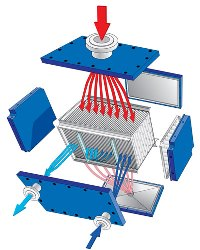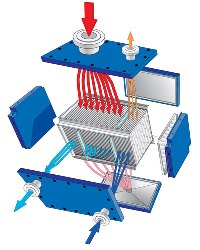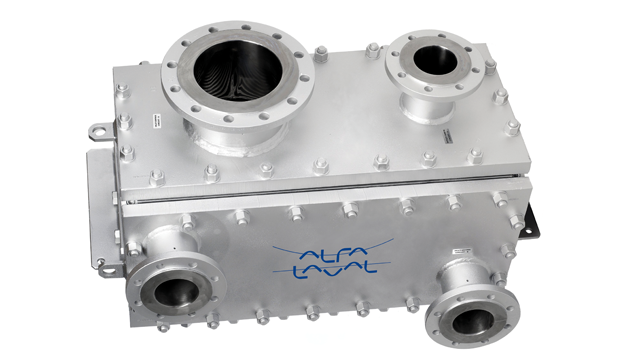Compabloc Free Flow
Alfa Laval Compabloc Free Flow is a highly efficient, fully welded plate heat exchanger, especially developed for use in pharmaceutical applications. It is easy to clean, offers full hygienic properties, exceptional performance, corrosion resistance, and compact size. The result is better product quality and lower operating costs for the customer.
Compact size
Superior heat transfer efficiency in a Compabloc Free Flow makes it possible to reduce the required heat transfer area dramatically compared to an equivalent shell-and-tube or graphite block. This means it can be as small as one-fifth in size compared to a shell-and-tube, and still offer better heat transfer.
The small size is especially valuable if you are planning to increase production but lack space. A Compabloc Free Flow fits anywhere and is easily integrated into your process.
Low costs and long working life
Thanks to the compact size, investment and installation costs for a Compabloc FreeFlow are low, even when the unit is manufactured in highly resistant materials such as Hastelloy.
The robust, fully welded design makes Compabloc Free Flow insensitive to thermal shock and vibrations. It is built for maximum reliability, offers a long working life, and good return on investment.
The high thermal efficiency allows a Compabloc Free Flow to work with a closer temperature approach than a shell-and-tube or graphite block. This makes it possible to use less cooling medium and in some cases a warmer, less costly cooling medium.
Meeting the highest hygienic standards
Compabloc Free Flow has excellent hygienic characteristics. It has no contact points on the product side, is fully drainable, and is easy to clean and inspect. It fully meets the requirements for installation in stringent cGMP processes. The risk of cross-contamination between batches is minimal thanks to the absence of contact points and the crevice-free design, which facilitates fast and thorough cleaning.
Cómo funciona
Condensador de paso único

El condensador de paso único es adecuado cuando el vapor contiene pequeñas cantidades de gases inertes. El vapor entra por la entrada de gran tamaño del panel superior y se condensa en las placas. El condensado sale a través del panel inferior inclinado que se puede drenar.
Condensador de dos pasos

La versión de dos pasos se puede utilizar cuando el vapor contiene fracciones más elevadas de gases inertes. La condensación principal tiene lugar durante el primer paso, que es cuando la parte condensable del vapor se condensa en las placas antes de salir por el panel inferior inclinado que se puede drenar. Los vapores no condensables se someten al segundo paso, que es cuando se subenfrían para maximizar la condensación. La turbulencia en el segundo paso ayuda a eliminar la niebla, y el vacío se extrae fácilmente de la salida del segundo paso. Con un condensador de dos pasos, no es necesario emplear un separador de vapor adicional, ya que la separación tiene lugar en la unidad.

